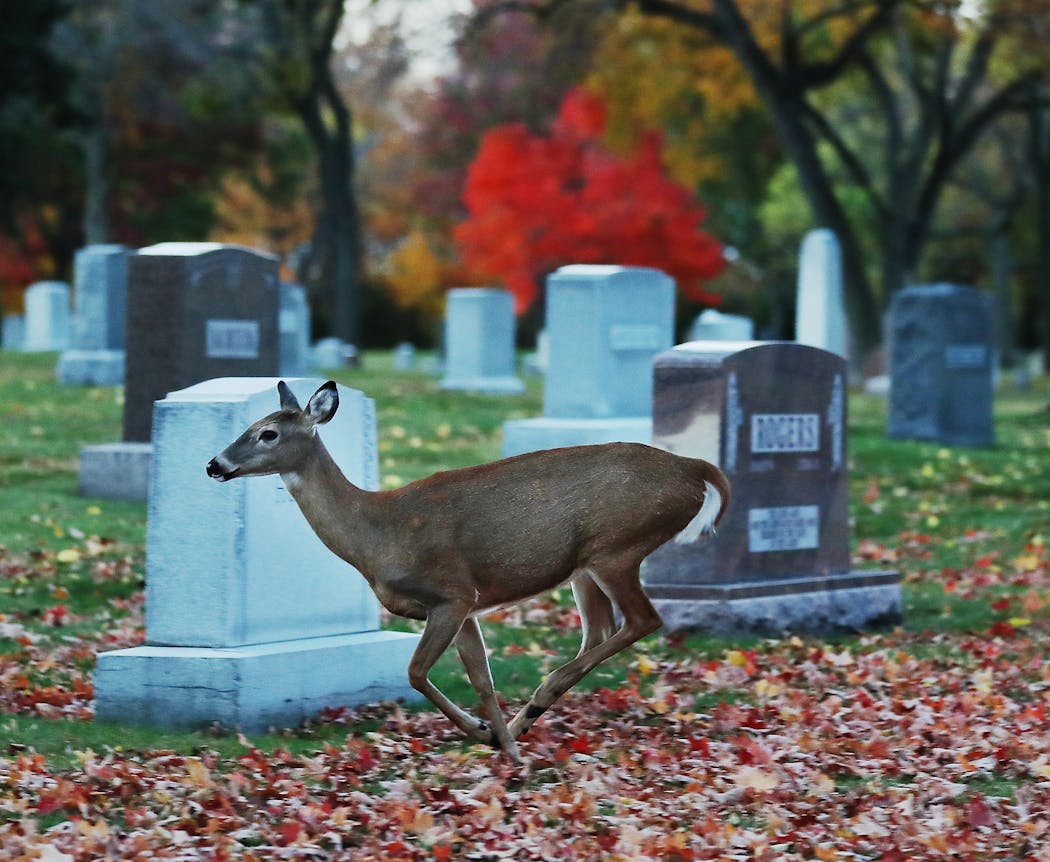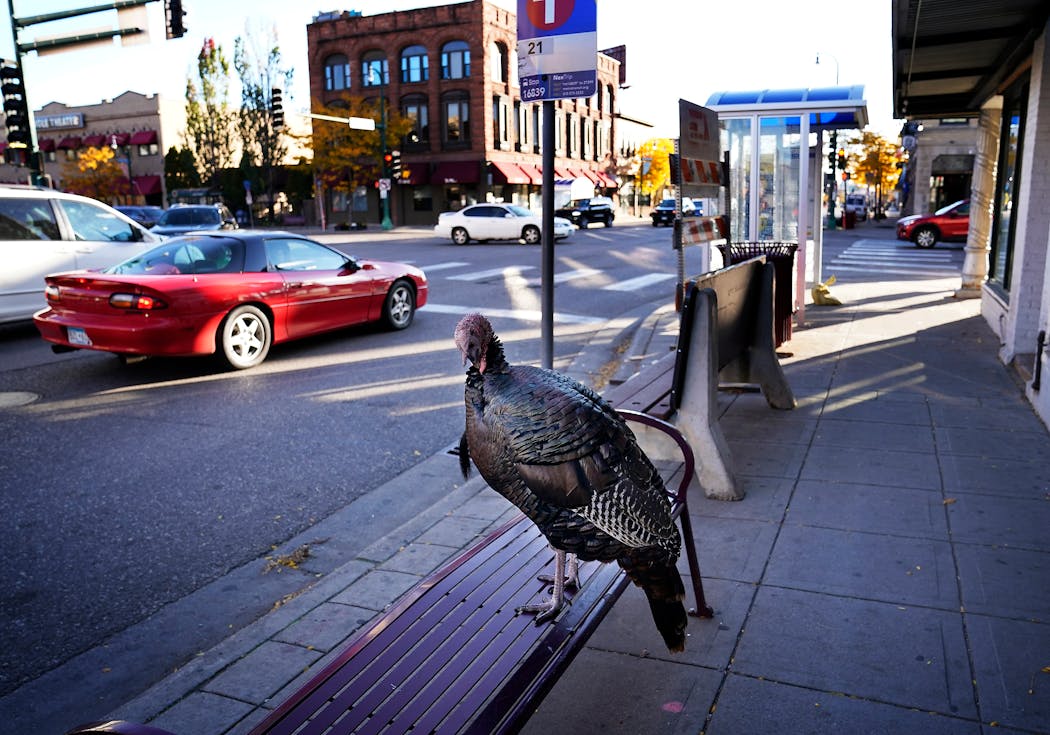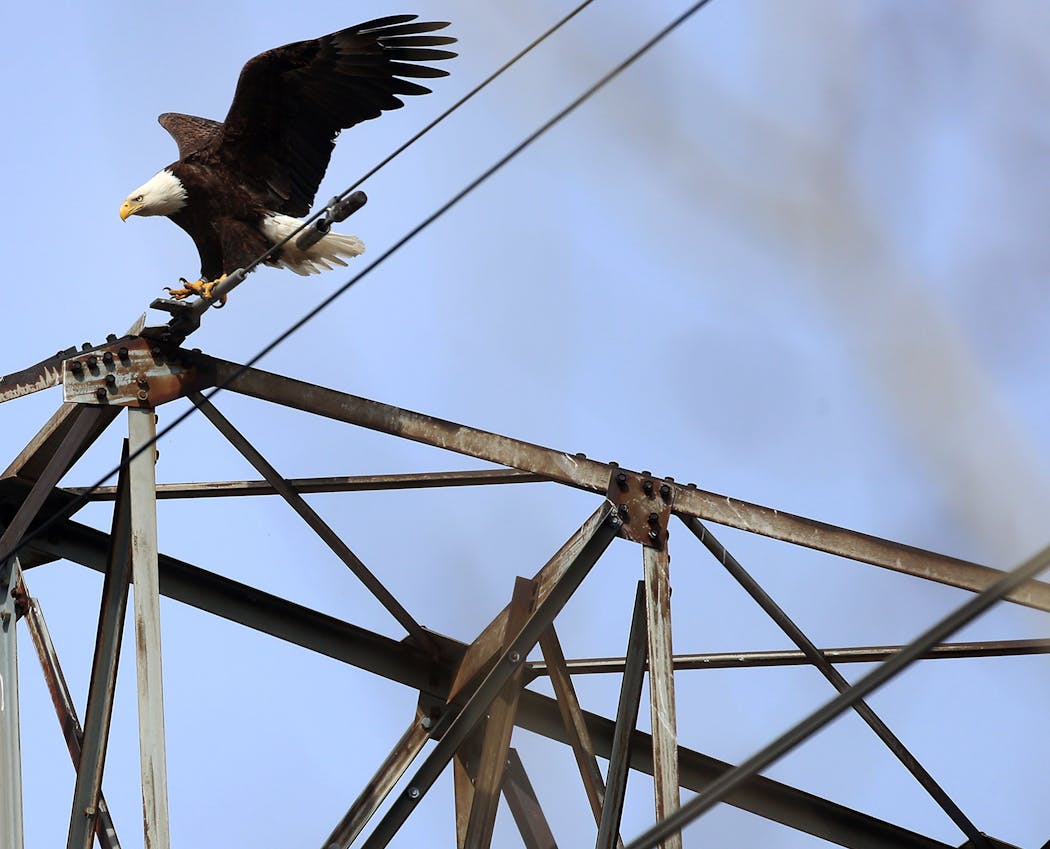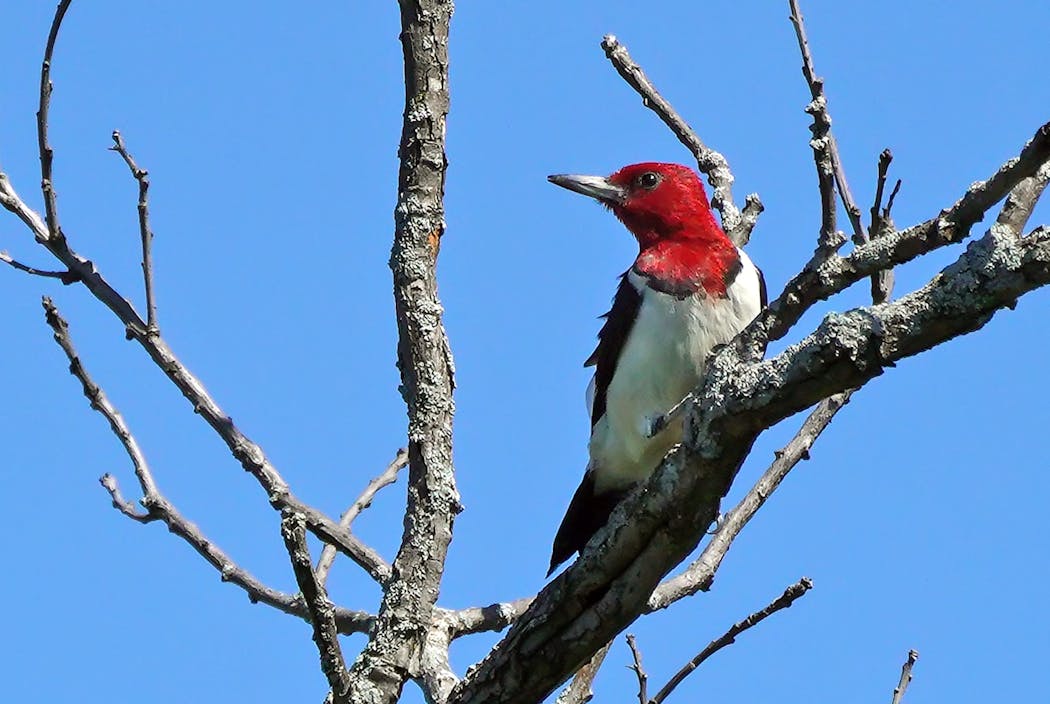Are more wild animals moving into Minnesota's cities?
Listen and subscribe to our podcast: Via Apple Podcasts | Spotify | Stitcher
Paul Thillen was surprised earlier this summer to see a large tom turkey waddle by his south Minneapolis yard — just feet from a busy interstate on-ramp. Then, a few days later, he watched a deer cross the same spot.
It got Thillen wondering if more wildlife has come to live in Minnesota's busiest cities and, if so, why?
"I've always seen the usual — lots of squirrels, rabbits and raccoons," said Thillen, who is retired and has always spent much of his time outdoors. "But deer and turkey are new. And in just the last couple years we've started getting bald eagle nests and things like that."
Thillen turned to Curious Minnesota, the Star Tribune's community reporting project where reader questions are brought to the experts. Urban wildlife managers say the answer is complicated, since some animals have fared much better than others in cities.
Deer and turkey have been among Minnesota's most stable populations for years, and their populations likely haven't increased much recently. But this year's drought has made some animals bolder in scavenging garbage cans and raiding well-watered gardens, said John Moriarty, senior manager of wildlife at Three Rivers Park District.
"I think more deer, especially, have been coming in and feeding in yards," he said.
Urban deer numbers have been high for a long time, wildlife managers said. Many counties, including Hennepin and Ramsey, give special tags to bow hunters to go into parks and thin deer herds to keep car accidents down.
Turkeys are a special case, however. Their populations are healthy, but only because of a heroic, nationwide effort to bring wild turkeys back from the brink of extinction.
After being overhunted and losing much of their habitat they were entirely wiped out of Minnesota — along with nearly every other part of the country — by the mid-1900s. They survived in only a few pockets where humans simply couldn't get them, hanging on deep in the swamps of Florida and high in the Ozarks of Missouri. In 1971, a few of those survivors were netted in the Ozarks, released in Minnesota and thrived.
People may be noticing these animals more now because of the pandemic, which has sparked an unprecedented amount of interest in wildlife and the outdoors across the nation, said Michael Goodnature, natural resources manager for Ramsey County.
Items like hunting ammunition and kayaks are in high demand, he said, and the number of birders visiting parks has shot up dramatically.
"I think people are just paying that much more attention to the wildlife that was already here," Goodnature said.
Other animals
Recently it seems like the biggest animals have been doing the best in urban areas, Moriarty said. Trumpeter swans, sandhill cranes, eagles, peregrine falcons and ospreys are all doing much better than they were 25 years ago, thanks largely to pesticide bans and extensive reintroduction efforts, he said.
Big mammals, too, have been creeping closer and closer to cities.
"Black bears have been showing up more frequently and staying longer in northern Hennepin County," Moriarty said. "We know of at least one sow with two cubs that's been spotted here since April."
A wolf pack not only lived, but thrived for three years, just 20 miles north of Minneapolis in the Cedar Creek Ecosystem Science Reserve. The pack grew to 19 wolves in 2017 before the predators began killing pet dogs and livestock. Wildlife managers were called in to kill off most of the pack.
Foxes and coyotes have been making themselves at home near the downtowns of Minneapolis and St. Paul for years. Star Tribune photographer David Joles has long followed foxes and their dens on Nicollet Island and Boom Island in Minneapolis, documenting them crossing railroad tracks and cobblestone streets overlooking towering old mills and the Guthrie Theater.
The best time to see foxes is at dawn or dusk, Joles said. And if you follow them long enough you'll get to know their habits.
"They do have advantages in urban settings," Joles said. "They're opportunists. People will do things like leave cat and dog food out on their porch and these foxes will go right up there and drain the bowl."
But the urban populations of many smaller animals are trending in the wrong direction.
Butterfly, bumblebee and other pollinator populations have crashed. Certain turtles, once common near ponds and in parks of just about every city, have either significantly declined or become endangered.
Red-headed woodpeckers have been decimated by habitat loss. Bluebirds, purple martins and other songbirds have all diminished in number, Moriarty said, even as the woods and trees upon which they rely have been protected.
"The problem is these species don't need just woods, they need woods with lots of plants on the ground," he said.
Invasive species, such as earthworms and jumping worms, have striped nutrients from the soil under those plants, causing die-offs. Invasive buckthorn weeds have also choked out the native plants that would otherwise make up much of the forest floor, cratering the habitat for songbirds.
But there is a great deal of hope. As urban and suburban parks and wildlife sanctuaries have removed buckthorn and other invasives, rarer birds have started to return, Goodnature said.
The metro area, with the Mississippi River, bounces back relatively quickly because it's part of such a large and important flyway, Goodnature said.
"Think of all the birds and waterfowl that use that flyway," he said. "All the green space we have in the Twin Cities is so important for them as they travel up and down, and they know exactly where to go."
If you'd like to submit a Curious Minnesota question, fill out the form below:
Read more Curious Minnesota stories:
Were grizzly bears ever indigenous to Minnesota?
Why is Minnesota the only mainland state with an abundance of wolves?
Is it safe to swim in Twin Cities rivers, or are they all too polluted?
Why do coyotes always howl when trains go by?
Why doesn't Minnesota's governor pardon the ceremonial turkey?
When did wild bison disappear from Minnesota?








